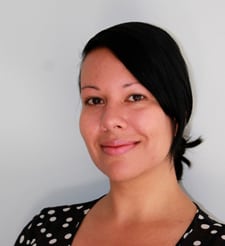 Technology has changed PR, and it has given a voice to citizen groups, thought leaders, and the very people humanitarian organizations aim to help: the beneficiaries. Web and social media now enable the UN and national and international NGOs to engage their audiences – no matter how large – at any time, through numerous channels, and in seconds.
Technology has changed PR, and it has given a voice to citizen groups, thought leaders, and the very people humanitarian organizations aim to help: the beneficiaries. Web and social media now enable the UN and national and international NGOs to engage their audiences – no matter how large – at any time, through numerous channels, and in seconds.
HQ and field offices are now empowered to bolster goals and key activities by shaping the message, tone and relationship with stakeholders. Public information officers today – even in remote locations, can aid their cause through storytelling, social media and prioritizing PR.
Tell a Tale
A mediocre story can dim out a perfect press release, but add a visual and you’ve hit a home run. Research has found that storytelling activates our brains, as the narrative captures attention. Great news for PI officers: you can inspire global visibility just by telling tales.
- Be a better writer: take a class or an online tutorial. Bad writing leaves a bad impression not only on you, but the organization as well.
- Ensure that your stories have a beginning, middle and end, while obsessively sticking to the point. Each sentence should support the whole.
- Know your beneficiaries: Who are they? What are their needs? What do solutions look like? What effective policies are underway?
- Quotes. Telling the story of a UNICEF field worker or a stateless orphan without basic shelter calls for a first person account. Interview them. What daily difficulties do they face? What kind of help do they need? Who else in the family, village or city is affected?
- Practice. The more you write, the better you get. Short web stories or photo essays are a good place to start.
An example of good storytelling is UNHCR’s 2013 World Refugee Day campaign in which PI reps used photo essays to capture the impact of war and conflict on families. Using social media, UNHCR also invited the public to participate in storytelling. Through powerful captions and potent visuals, the UN Refugee Agency was able to engage a global audience, inform of its main activities, and raise funds for its operation.
Note: If your organization has a Goodwill Ambassador (like WFP’s Ambassador Against Hunger, Christina Aguilera), involve them in the storytelling. These Ambassadors are celebrities, and celebrities attract attention. Use these opportunities to highlight key activities and underscore the needs. If the GWA doesn’t visit your country or field office, speak to Sr. Management about making a visit request to HQ.
Face Facebook (and other platforms)
Social media’s influence is irrefutable. Politicians are on Twitter, organizations on Facebook and platforms such as Pinterest and Thunderclap run major campaigns. Earlier this year OCHA released a report on the impact of social media in humanitarian emergencies. The reasons to embrace it are many – but where to start?
- Begin with two platforms. To decide which, consider your talents. If you have a good trigger finger, try Instagram, Flickr or Pinterest.
- Engage and initiate. Connect with your stakeholders, sister organizations and regional and HQ PI teams. Tag, share, repost. Participate in discussion.
- Speak easy: social media isn’t a place for conference room jargon. Simplicity is beautiful.
- Seeing is believing. Post photos and videos in between other content; nothing overpowers a visual.
- You’re not a collection agency, so don’t stockpile random friends and followers. Know your audience.
- Check your ego. You’re posting on behalf of the organization, its values and key activities – not yourself.
- Keep HQ in the loop. Ask for advice, guidance and guidelines. Integrate your posts with HQ’s social media strategy as they have a larger pool of relevant friends and followers – why not piggyback?
Prioritize PR
While at UNHCR Bosnia and Herzegovina, I was glad to work with management that understood the weight of visibility. As well, UNDP and UNHCR HQ organized routine communications trainings with expert reporters, photographers, and consultants guiding current PR, from campaign and crisis management to social media outreach.
Professional development is vital for enhancing organizational capacity. Organizations that don’t prioritize PR cannot maximize cooperation and partnerships with host governments, donors, media and other stakeholders.
Successful managers and PI reps invest in, and nurture a modern communications culture guided by storytelling and social media. This is also true for staff in emergency zones: you are own best weapon. If you can snap a photo, tell a good story and share it on the platforms, you have done your job.
Mina Jasarevic served as a Reporting/Public Information Officer with the United Nations High Commissioner for Refugees (UNHCR) in Bosnia-Herzegovina and Yemen. She is now a policy analyst in Ottawa, Canada.

I wish this article had a visually or infographic or whatever to go along with it so I’d be more interested. #PracticeWhatYouPreach